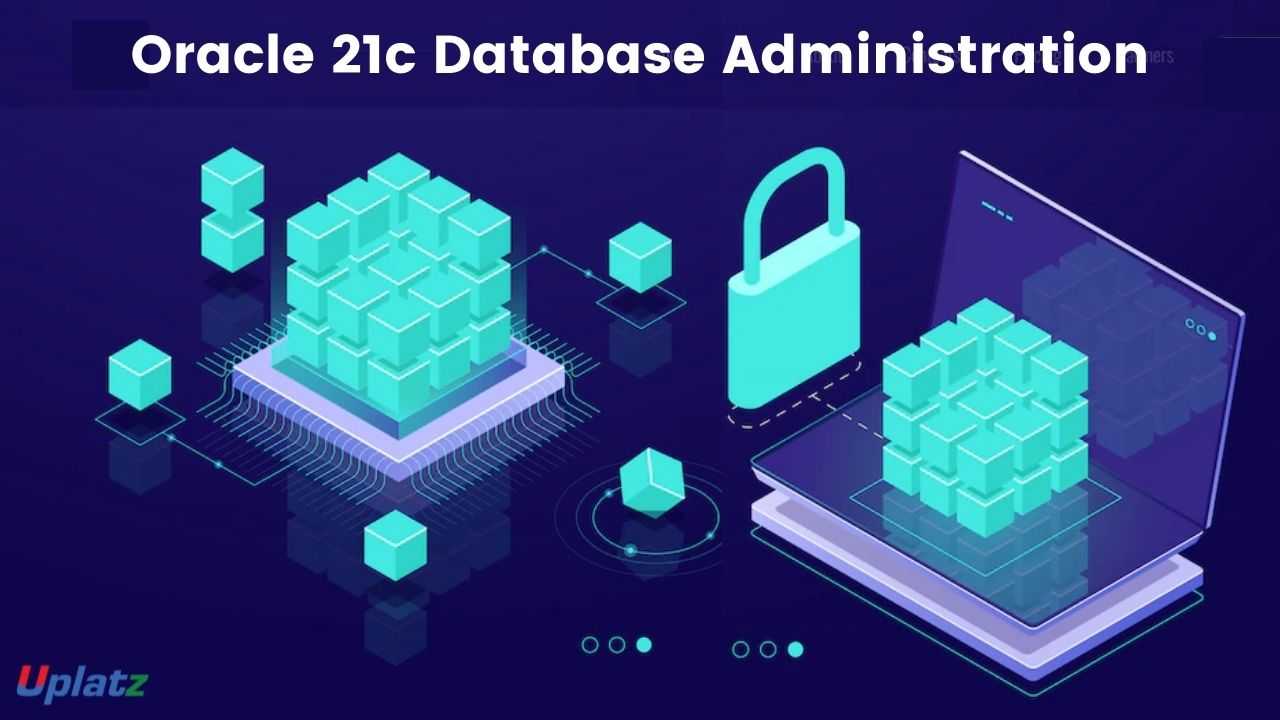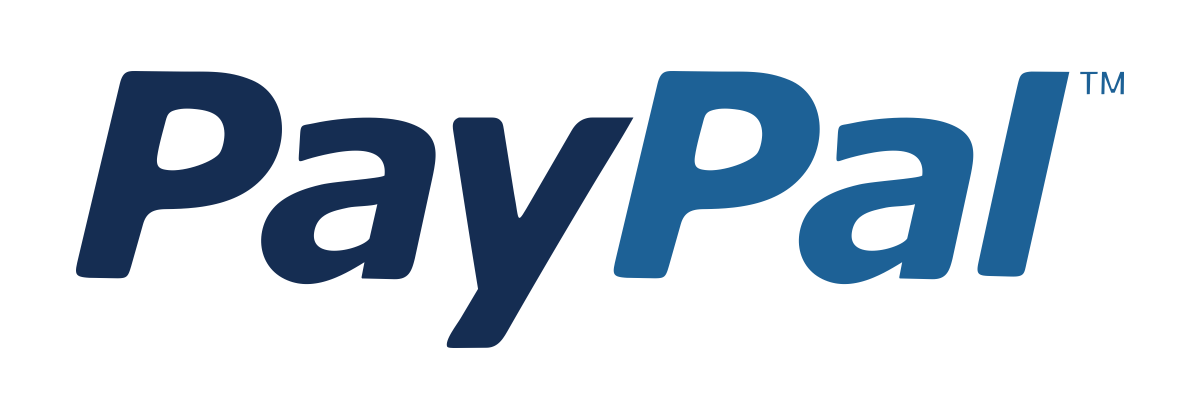Neo4j
Learn Neo4j from scratch and build intelligent, connected data-driven applications using the power of graph databases.
Course Duration: 10 Hours
Preview Neo4j course
Price Match Guarantee Full Lifetime Access Access on any Device Technical Support Secure Checkout Course Completion Certificate 92% Started a new career
BUY THIS COURSE (
92% Started a new career
BUY THIS COURSE (GBP 12 GBP 29 )-
 81% Got a pay increase and promotion
81% Got a pay increase and promotion
Trending
Cutting-edge
Popular
Coming soon (2026)
Students also bought -
-

- SQL Programming with MySQL Database
- 8 Hours
- GBP 12
- 4562 Learners
-

- MongoDB
- 15 Hours
- GBP 12
- 259 Learners
-

- Oracle 21c DBA
- 5 Hours
- GBP 12
- 79 Learners

Neo4j – Master Graph Databases and Cypher Query Language – Online Course
Neo4j is the world's leading native graph database, purpose-built to manage and query highly connected data. This course—Neo4j: Master Graph Databases and Cypher Query Language—is designed to take you from beginner to expert in managing data relationships with graph models. Whether you are a developer, data scientist, analyst, or database administrator, this course will help you master the Cypher query language, build complex data relationships, and solve real-world data challenges that traditional databases can't handle efficiently.
In today’s data-centric world, understanding how entities relate to one another is just as important as understanding the entities themselves. Traditional relational databases (RDBMS) struggle when it comes to querying deeply nested or dynamic relationships—think social networks, fraud detection, recommendation engines, or supply chains. This is where Neo4j shines.
Neo4j is unique because it treats relationships as first-class citizens, meaning every connection in the data is explicitly stored, navigable, and optimized for speed. Its property graph model allows you to store both data and metadata about the data, enabling more flexible and faster analysis. With its declarative query language Cypher, Neo4j enables users to express complex graph patterns in a readable and concise manner.
This course begins by introducing you to the concept of graph theory and how it maps to Neo4j’s data model. From there, you’ll learn to set up your development environment, install and run Neo4j locally and on the cloud, and build graph-based solutions using real-world datasets. You'll gain hands-on experience through interactive exercises and projects such as building recommendation engines, social networks, knowledge graphs, and access control systems.
Unlike SQL, where joins across multiple tables become a performance bottleneck, Neo4j’s native graph architecture allows for constant-time traversal, making it a superior choice for connected data. By using graph queries, you can find fraud rings, trace root causes in IT networks, recommend friends or products, and analyze organizational hierarchies—all in milliseconds.
Neo4j is used by Fortune 500 companies and startups alike, across industries including finance, e-commerce, healthcare, and logistics. With graph databases rapidly gaining popularity, mastering Neo4j is a strategic advantage for data professionals and developers aiming to solve next-generation data problems.
What Makes This Course Unique
- Beginner-friendly: No prior knowledge of graph theory or databases required.
- Hands-on labs: Learn by doing using Neo4j Browser, Bloom, and AuraDB.
- Real-world projects: Build your own recommendation engine, fraud detection pipeline, and social network analysis.
- Industry alignment: Prepares you for Neo4j Certified Professional exam.
- Multi-role perspective: Learn Neo4j from the point of view of analysts, engineers, and data scientists.
Whether you are transitioning from relational databases or starting fresh in the world of graphs, this course provides the complete foundation and practical experience needed to model, store, query, and visualize connected data with confidence.
Course/Topic 1 - Coming Soon
-
The videos for this course are being recorded freshly and should be available in a few days. Please contact info@uplatz.com to know the exact date of the release of this course.
Course Objectives Back to Top
By the end of this course, you will be able to:
- Understand the fundamental concepts of graph databases and their advantages over traditional relational and NoSQL databases.
- Install, configure, and manage Neo4j instances, including both desktop and server environments.
- Master the Cypher Query Language for creating, reading, updating, and deleting (CRUD) graph data.
- Design and implement effective graph data models using nodes, relationships, properties, and labels.
- Perform complex data traversals and pattern matching using Cypher's powerful query capabilities.
- Utilize advanced Cypher clauses such as MATCH, WHERE, CREATE, MERGE, SET, DELETE, REMOVE, RETURN, WITH, UNWIND, and aggregation functions.
- Import and export data into and out of Neo4j using various methods, including LOAD CSV.
- Optimize Cypher queries for performance and understand query execution plans.
- Integrate Neo4j with popular programming languages (e.g., Python, Java) using official drivers.
- Apply best practices for building scalable and efficient graph applications.
- Troubleshoot common issues in Neo4j and Cypher query development.
- Leverage Neo4j for real-world use cases such as recommendation engines, fraud detection, social networks, and knowledge graphs.
Course Syllabus Back to Top
Neo4j Course Syllabus
Module 1: Introduction to Graph Databases
- What is a graph database?
- Relational vs Graph databases
- Neo4j architecture and use cases
Module 2: Installing and Setting Up Neo4j
- Neo4j Desktop & AuraDB
- Cloud deployment options
- Introduction to Neo4j Browser and Neo4j Bloom
Module 3: Graph Data Modeling
- Nodes, Relationships, Properties
- Data modeling best practices
- Graph schema design
Module 4: Introduction to Cypher Query Language
- CREATE, MATCH, RETURN
- Filtering with WHERE
- Aliases and pattern matching
Module 5: Intermediate Cypher
- Aggregation and ordering
- Working with collections and lists
- Merging and updating nodes
Module 6: Advanced Cypher and Performance
- Subqueries and path traversal
- Indexes and constraints
- Query tuning and profiling
Module 7: Importing and Exporting Data
- CSV import
- Using APOC procedures
- Connecting Neo4j with Python and JavaScript
Module 8: Security and Access Control
- Role-based access
- Authentication & authorization
- Data masking and user auditing
Module 9: Real-World Projects
- Recommendation system
- Fraud detection graph
- Network analysis
Module 10: Visualization and Tools
-
Neo4j Bloom and Graph Apps
-
Integrating with BI tools
-
Building dashboards
Certification Back to Top
Upon successful completion of the course, learners will receive a Certificate of Completion from Uplatz, validating their skills in Neo4j graph database technology and Cypher query language. This certification provides proof of your ability to handle connected data structures, perform complex queries efficiently, and design intelligent applications powered by Neo4j. It also positions you to pursue the Neo4j Certified Professional credential and boosts your credibility in technical interviews and freelance gigs focused on data architecture and analytics.
Career & Jobs Back to Top
Graph databases are becoming essential tools in the data tech stack of modern enterprises. Completing this course opens doors to job opportunities in:
- Graph Data Engineer
- Neo4j Developer
- Data Scientist (Graph Analytics)
- Fraud Analyst
- Knowledge Graph Specialist
Industries like finance, social media, telecom, e-commerce, and health tech actively seek professionals skilled in Neo4j for roles in fraud detection, network security, knowledge management, and personalization engines. Mastering Neo4j not only sets you apart in a competitive job market but also equips you to build the future of connected data systems.
Interview Questions Back to Top
1. What is Neo4j?
Neo4j is a native graph database designed to store, manage, and query data based on its relationships, using a property graph model.
Neo4j is a native graph database designed to store, manage, and query data based on its relationships, using a property graph model.
2. What is Cypher in Neo4j?
Cypher is Neo4j’s declarative query language, similar to SQL but optimized for expressing graph traversal and pattern matching.
Cypher is Neo4j’s declarative query language, similar to SQL but optimized for expressing graph traversal and pattern matching.
3. How does Neo4j differ from relational databases?
Unlike relational databases, which use tables and joins, Neo4j uses nodes and relationships, allowing for more efficient queries over connected data.
Unlike relational databases, which use tables and joins, Neo4j uses nodes and relationships, allowing for more efficient queries over connected data.
4. What is a node in Neo4j?
A node is a fundamental unit of data in Neo4j, representing entities such as people, products, or locations.
A node is a fundamental unit of data in Neo4j, representing entities such as people, products, or locations.
5. What are relationships in Neo4j?
Relationships define how nodes are connected and always have a direction, a type, and optional properties.
Relationships define how nodes are connected and always have a direction, a type, and optional properties.
6. How do you create a node in Cypher?
You can use the CREATE clause: CREATE (p:Person {name: 'John', age: 30}).
You can use the CREATE clause: CREATE (p:Person {name: 'John', age: 30}).
7. What is the MATCH clause used for?
MATCH is used to search for patterns in the graph and is analogous to SELECT in SQL.
MATCH is used to search for patterns in the graph and is analogous to SELECT in SQL.
8. How does Neo4j ensure performance at scale?
Neo4j uses index-free adjacency and optimized storage to enable fast graph traversals, regardless of the graph size.
Neo4j uses index-free adjacency and optimized storage to enable fast graph traversals, regardless of the graph size.
9. Can Neo4j be integrated with programming languages?
Yes, it can be used with Python, Java, JavaScript, and more using official drivers and third-party libraries.
Yes, it can be used with Python, Java, JavaScript, and more using official drivers and third-party libraries.
10. What are some use cases of Neo4j?
Popular use cases include recommendation engines, fraud detection, network analysis, knowledge graphs, and identity access management.
Popular use cases include recommendation engines, fraud detection, network analysis, knowledge graphs, and identity access management.
Course Quiz Back to Top
FAQs
Back to Top
Q1. What are the payment options?
A1. We have multiple payment options:
1) Book your course on our webiste by clicking on Buy this course button on top right of this course page
2) Pay via Invoice using any credit or debit card
3) Pay to our UK or India bank account
4) If your HR or employer is making the payment, then we can send them an invoice to pay.
Q2. Will I get certificate?
A2. Yes, you will receive course completion certificate from Uplatz confirming that you have completed this course with Uplatz. Once you complete your learning please submit this for to request for your certificate https://training.uplatz.com/certificate-request.php
Q3. How long is the course access?
A3. All our video courses comes with lifetime access. Once you purchase a video course with Uplatz you have lifetime access to the course i.e. forever. You can access your course any time via our website and/or mobile app and learn at your own convenience.
Q4. Are the videos downloadable?
A4. Video courses cannot be downloaded, but you have lifetime access to any video course you purchase on our website. You will be able to play the videos on our our website and mobile app.
Q5. Do you take exam? Do I need to pass exam? How to book exam?
A5. We do not take exam as part of the our training programs whether it is video course or live online class. These courses are professional courses and are offered to upskill and move on in the career ladder. However if there is an associated exam to the subject you are learning with us then you need to contact the relevant examination authority for booking your exam.
Q6. Can I get study material with the course?
A6. The study material might or might not be available for this course. Please note that though we strive to provide you the best materials but we cannot guarantee the exact study material that is mentioned anywhere within the lecture videos. Please submit study material request using the form https://training.uplatz.com/study-material-request.php
Q7. What is your refund policy?
A7. Please refer to our Refund policy mentioned on our website, here is the link to Uplatz refund policy https://training.uplatz.com/refund-and-cancellation-policy.php
Q8. Do you provide any discounts?
A8. We run promotions and discounts from time to time, we suggest you to register on our website so you can receive our emails related to promotions and offers.
Q9. What are overview courses?
A9. Overview courses are 1-2 hours short to help you decide if you want to go for the full course on that particular subject. Uplatz overview courses are either free or minimally charged such as GBP 1 / USD 2 / EUR 2 / INR 100
Q10. What are individual courses?
A10. Individual courses are simply our video courses available on Uplatz website and app across more than 300 technologies. Each course varies in duration from 5 hours uptop 150 hours.
Check all our courses here https://training.uplatz.com/online-it-courses.php?search=individual
Q11. What are bundle courses?
A11. Bundle courses offered by Uplatz are combo of 2 or more video courses. We have Bundle up the similar technologies together in Bundles so offer you better value in pricing and give you an enhaced learning experience.
Check all Bundle courses here https://training.uplatz.com/online-it-courses.php?search=bundle
Q12. What are Career Path programs?
A12. Career Path programs are our comprehensive learning package of video course. These are combined in a way by keeping in mind the career you would like to aim after doing career path program. Career path programs ranges from 100 hours to 600 hours and covers wide variety of courses for you to become an expert on those technologies.
Check all Career Path Programs here https://training.uplatz.com/online-it-courses.php?career_path_courses=done
Q13. What are Learning Path programs?
A13. Learning Path programs are dedicated courses designed by SAP professionals to start and enhance their career in an SAP domain. It covers from basic to advance level of all courses across each business function. These programs are available across SAP finance, SAP Logistics, SAP HR, SAP succcessfactors, SAP Technical, SAP Sales, SAP S/4HANA and many more
Check all Learning path here https://training.uplatz.com/online-it-courses.php?learning_path_courses=done
Q14. What are Premium Career tracks?
A14. Premium Career tracks are programs consisting of video courses that lead to skills required by C-suite executives such as CEO, CTO, CFO, and so on. These programs will help you gain knowledge and acumen to become a senior management executive.
Q15. How unlimited subscription works?
A15. Uplatz offers 2 types of unlimited subscription, Monthly and Yearly.
Our monthly subscription give you unlimited access to our more than 300 video courses with 6000 hours of learning content. The plan renews each month. Minimum committment is for 1 year, you can cancel anytime after 1 year of enrolment.
Our yearly subscription gives you unlimited access to our more than 300 video courses with 6000 hours of learning content. The plan renews every year. Minimum committment is for 1 year, you can cancel the plan anytime after 1 year.
Check our monthly and yearly subscription here https://training.uplatz.com/online-it-courses.php?search=subscription
Q16. Do you provide software access with video course?
A16. Software access can be purchased seperately at an additional cost. The cost varies from course to course but is generally in between GBP 20 to GBP 40 per month.
Q17. Does your course guarantee a job?
A17. Our course is designed to provide you with a solid foundation in the subject and equip you with valuable skills. While the course is a significant step toward your career goals, its important to note that the job market can vary, and some positions might require additional certifications or experience.
Remember that the job landscape is constantly evolving. We encourage you to continue learning and stay updated on industry trends even after completing the course. Many successful professionals combine formal education with ongoing self-improvement to excel in their careers. We are here to support you in your journey!
Q18. Do you provide placement services?
A18. While our course is designed to provide you with a comprehensive understanding of the subject, we currently do not offer placement services as part of the course package. Our main focus is on delivering high-quality education and equipping you with essential skills in this field.
However, we understand that finding job opportunities is a crucial aspect of your career journey. We recommend exploring various avenues to enhance your job search:
a) Career Counseling: Seek guidance from career counselors who can provide personalized advice and help you tailor your job search strategy.
b) Networking: Attend industry events, workshops, and conferences to build connections with professionals in your field. Networking can often lead to job referrals and valuable insights.
c) Online Professional Network: Leverage platforms like LinkedIn, a reputable online professional network, to explore job opportunities that resonate with your skills and interests.
d) Online Job Platforms: Investigate prominent online job platforms in your region and submit applications for suitable positions considering both your prior experience and the newly acquired knowledge. e.g in UK the major job platforms are Reed, Indeed, CV library, Total Jobs, Linkedin.
While we may not offer placement services, we are here to support you in other ways. If you have any questions about the industry, job search strategies, or interview preparation, please dont hesitate to reach out. Remember that taking an active role in your job search process can lead to valuable experiences and opportunities.
Q19. How do I enrol in Uplatz video courses?
A19. To enroll, click on "Buy This Course," You will see this option at the top of the page.
a) Choose your payment method.
b) Stripe for any Credit or debit card from anywhere in the world.
c) PayPal for payments via PayPal account.
d) Choose PayUmoney if you are based in India.
e) Start learning: After payment, your course will be added to your profile in the student dashboard under "Video Courses".
Q20. How do I access my course after payment?
A20. Once you have made the payment on our website, you can access your course by clicking on the "My Courses" option in the main menu or by navigating to your profile, then the student dashboard, and finally selecting "Video Courses".
Q21. Can I get help from a tutor if I have doubts while learning from a video course?
A21. Tutor support is not available for our video course. If you believe you require assistance from a tutor, we recommend considering our live class option. Please contact our team for the most up-to-date availability. The pricing for live classes typically begins at USD 999 and may vary.









